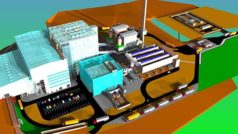Waste-to-Energy is complementary to Quality Recycling, helping to achieve a Clean Circular Economy, says a press release by CEWEP. If waste is too polluted for Quality Recycling, it should be used to generate local, affordable and secure energy in Waste-to-Energy plants.
CEWEP endorses the Commission’s proposal to phasing out landfilling of recyclable waste. However, we would have preferred a more ambitious deadline: by 2020 rather than 2025. This delay is a lost opportunity for improving resource use, considering that more than 80 million tonnes of municipal waste is still landfilled in the EU 28 each year.
A ban on landfilling will provide the legal certainty required for future planning and investments in the necessary recycling and energy recovery infrastructure – unleashing the full potential of waste as a resource. This will increase material recycling rates and energy generation from the remaining waste.
CEWEP hopes that the vital issue of Quality Recycling, rather than just focusing on quantity, will receive greater attention in the on-going revision.
Quality Recycling is key in order to enable industry and consumers to have greater confidence in recycled materials, and to actually use them. To develop Quality Recycling we need: accurate measurement, better data and transparency about what goes in and what goes out of Recycling plants.
Greater transparency is also necessary in order to avoid that the EU’s “recycling” targets are achieved simply by shipping the waste to countries with poorer environmental and social standards than those in Europe.
CEWEP would like to stress that Waste-to-Energy plants act as a driver for Quality Recycling by treating polluted and complex waste, keeping harmful substances out of the Circular Economy. Sometimes materials are bonded and can be extracted only by means of thermal treatment. Ferrous and non-ferrous metals can be extracted from the bottom ash of Waste-to-Energy plants and further recycled into new products such as aluminium castings for the automotive industry.
Additionally Waste-to-Energy plants generate affordable local energy from residual waste and contribute to security of energy supply and reduction of greenhouse gas emissions. In some cities they cover 50% and more of the local heat demand.
Considering that in 2012 the EU 28 imported 4 million TJ of natural gas from Russia (Eurostat), it is worth noting that the energy content of the waste treated by Waste-to-Energy plants in the EU can substitute 19% of Russian gas imports (2012).







